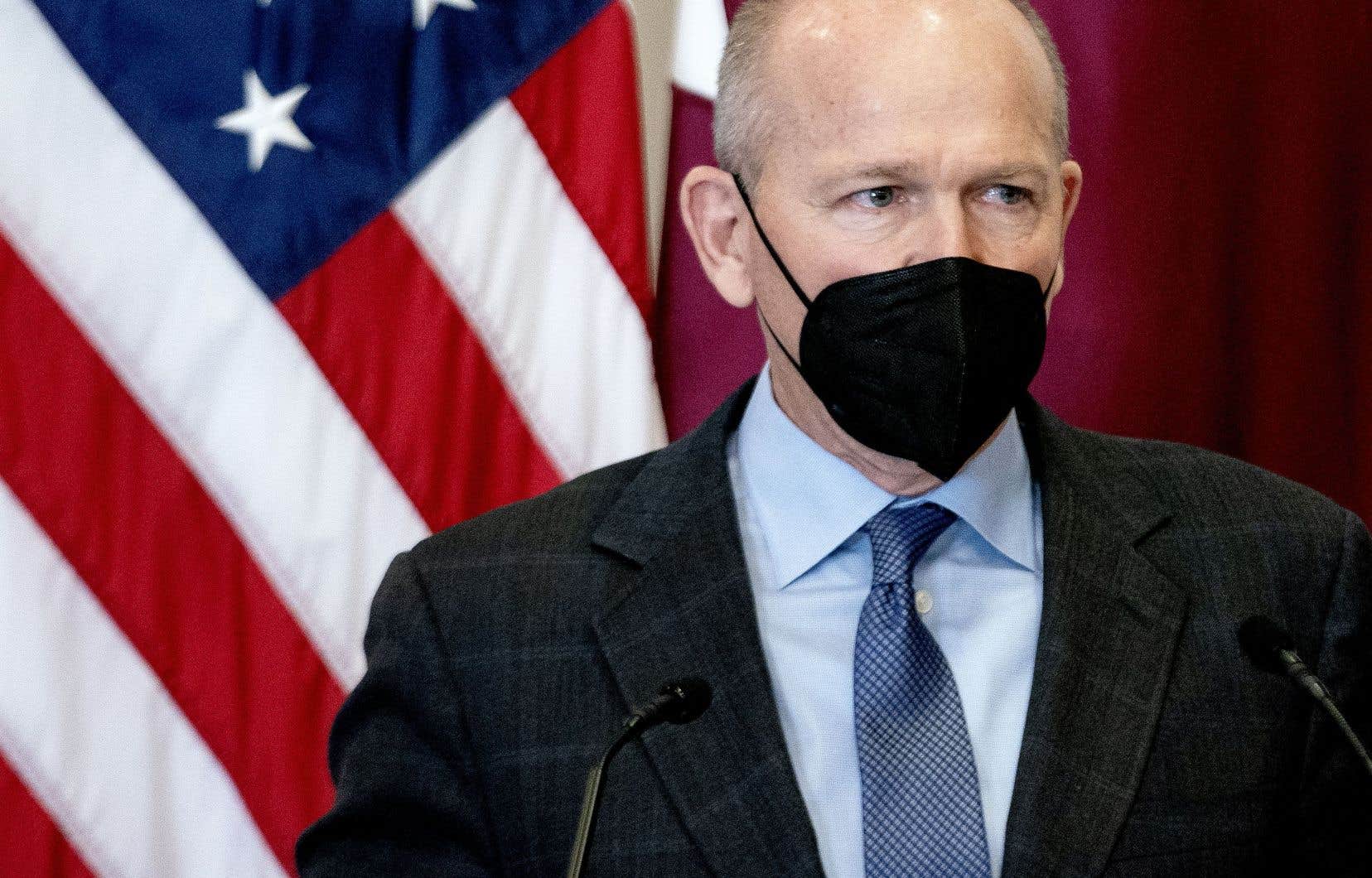Boeing CEO Dave Calhoun admitted Tuesday to a “mistake” after the door stall incident during an Alaska Airlines flight, which resulted in dozens of 737 planes being grounded MAX 9 from the American manufacturer.
” We will approach [ce dossier] “starting by recognizing our mistake,” the executive said during a meeting at the group’s Renton factory. [État du Washington]according to quotes sent by a Boeing spokeswoman.
Dave Calhoun promised to address the issue “transparently, every step of the way.”
He said he was relying on the American Civil Aviation Regulatory Authority (FAA) “to ensure that all aircraft authorized to fly are safe and to ensure that this event never happens again”.
“All the details are important,” he insisted, claiming to have been marked by the images of the Alaska Airlines flight, which had to turn around on Friday after a door was torn off.
The boss of the aircraft manufacturer did not specify what he meant by “error”.
On Monday, the United company, which owns the first fleet of 737 MAX 9s in the world (79 aircraft), indicated that it had discovered “bolts that needed to be tightened” during checks on the condemned doors of its 737 MAX 9s, the same as the one torn off Friday during the Alaska Airlines flight.
Locking certain doors is offered by Boeing to its customers when the number of existing emergency exits is already sufficient in relation to the number of seats in the aircraft.
In addition to the 737 MAX 9, this device already exists on other Boeing models, notably the 737-900ER, launched in 2006 and which has not experienced any similar incidents since.
Planes on the ground
Also on Monday, Alaska Airlines also revealed that it had detected “loosely attached equipment” on some of its aircraft of this type, after preliminary inspections.
The reasons for the incident that occurred on Friday have not yet been established and the American Transportation Safety Agency (NTSB) is continuing its investigations.
Its president, Jennifer Homendy, announced Monday evening that she had not found any bolts among the elements that came off the Alaska Airlines plane on Friday.
Further research will “determine whether the bolts were there,” she continued.
The FAA announced Tuesday, in a statement sent to AFP, that “all Boeing 737-9s with an obstructed door [resteraient] on the ground as long as [l’agence] will not have established that they can be used again.
The regulator specified that Boeing had modified the instructions on Tuesday allowing the complete inspection of the door, frame and fasteners, after receiving feedback concerning the first instructions communicated on Monday.
“Passenger safety, not speed [d’exécution des inspections]will determine the schedule for returning the 737 9 MAX to service,” the FAA added.
Some 171 of the 218 aircraft of this model in service are affected by the flight suspension ordered Saturday by the agency.
“We are still awaiting inspection and maintenance instructions from Boeing, and validation of these procedures by the FAA,” wrote Alaska Airlines on its X account (formerly Twitter). “Until then, the fleet [des 737-9] will stay on the ground. »
Canceled flights
The Seattle (Washington State) company had to cancel more than 100 flights on Tuesday due to the shutdown of some of its aircraft.
Since Saturday, Alaska Airlines and United have had to cancel a total of nearly 1,500 flights.
This new setback, which follows a series of others in recent years, comes as Boeing was recovering its head and managed to improve its production rates by the end of 2023.
After delivering only 15 737 MAX planes in September, its lowest monthly total in two years, then 18 in October, the Arlington (Virginia) aircraft manufacturer climbed to 46 in November, then 44 in December, according to figures published Tuesday.
“I think Airbus and Boeing, and certainly Boeing, need to significantly improve their quality control,” said the boss of the European airline Ryanair, Michael O’Leary, in an interview published Tuesday by the Financial Times.
Already a major customer of Boeing, Ryanair ordered, last May, 300 737 MAX 10 planes, a model which has not yet been certified by the FAA.
